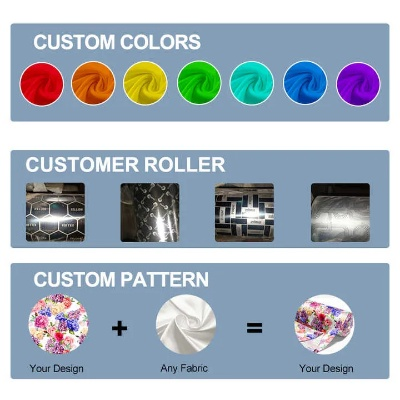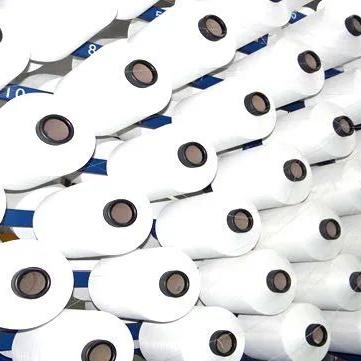How to Photograph Textiles with a Tactile Feel
Photographing textiles with a tactile feel can be challenging, as they often lack the contrast and texture that traditional photography requires. However, there are several techniques you can use to capture their unique qualities. Firstly, consider using a macro lens or a long focal length lens to bring the subject closer and create a sense of intimacy. This will help to emphasize the texture and pattern of the fabric. Additionally, experiment with different lighting sources such as natural light or flashes, as well as angles and positions to create different effects. Finally, use a tripod to stabilize your camera and avoid blurry images caused by hand movements. By following these tips, you can create stunning photographs that capture the beauty and texture of textiles with a tactile feel.
Introduction: Photographing textiles is not just about capturing their visual appeal; it's also about conveying the texture, weight, and depth of materials. A well-executed photograph can make even the most delicate fabrics seem rich and substantial. In this guide, we'll explore techniques for creating a sense of thickness in your images using photography. We'll start by discussing the importance of lighting and composition, then move on to specific techniques such as cropping, framing, and post-processing. Finally, we'll showcase some successful examples of how these principles have been applied to create compelling textile photographs.

Lighting and Composition: The right lighting and composition are essential for capturing the texture and weight of textiles. Natural light is often the best choice for photographing textiles because it provides a soft, warm glow that enhances the fabric's appearance. However, if natural light is unavailable, studio lights or artificial light sources like LED strips can be used to simulate daylight.
When shooting textiles, it's important to consider the angle and distance at which you're taking the photo. A close-up shot can help emphasize the texture and pattern of the fabric, while a wider shot can give a sense of its size and shape. To create a sense of depth and dimensionality, use a tripod to steady your camera and adjust the angle of view accordingly.
Cropping: Cropping is a technique used to focus attention on specific areas of a photograph, rather than the entire image. By selecting a smaller area within the frame, you can create a sense of depth and focus that is not possible with a larger image. This technique is particularly useful when photographing textiles that have a complex design or pattern that would otherwise overwhelm the viewer.
For example, imagine a large piece of clothing that has intricate details and patterns. By cropping just the front of the garment, you can draw the viewer's eye to the focal point without distracting from the rest of the image.
Framing: Framing refers to the placement of elements within the frame. The right framing can enhance the overall effect of your photograph and make it more impactful. When photographing textiles, it's important to consider how the fabric will appear in relation to the background. A plain background can help draw attention to the textile's features, while a busy background can divert attention away from them.
One effective way to achieve this is by using a wide-angle lens to capture the full width of the fabric. This creates a sense of depth and space around the fabric, making it appear more substantial and three-dimensional. Additionally, using a slight tilt can help emphasize the fabric's vertical lines and create a sense of height.
Post-Processing: After taking the photograph, there are several steps you can take to further enhance the texture and feel of your images. One common technique is to apply a texture filter to simulate the look of different materials. For example, adding a grainy texture can give a vintage or rustic feel to a photograph of silk.
Another technique is to adjust the contrast and saturation levels to highlight the colors and patterns of the fabric. You can also experiment with vignetting or blurring to create a softer, more inviting effect.
Case Study: Let's take a closer look at an example of how these techniques were applied to create a compelling textile photograph. Imagine you're photographing a luxurious velvet dress that was designed to look extravagant and opulent.
To capture its texture and weight, you could use a wide-angle lens and position the subject at a slight angle. This would help emphasize the fabric's vertical lines and create a sense of height. Additionally, you could crop the image to focus only on the front of the dress, drawing the viewer's eye to the intricate lacework and sequins.
To add a texture filter, you could apply a grainy texture to simulate the feel of velvet or silk. You could also adjust the contrast and saturation levels to highlight the vibrant colors and bold patterns of the dress. Finally, you could experiment with vignetting to soften the edges of the image and create a more inviting look.
Conclusion: Photographing textiles with a tactile feel requires careful consideration of lighting, composition, framing, and post-processing techniques. By following these guidelines and using creative approaches, you can create photographs that not only showcase the beauty of your subject but also transport viewers into a world of texture and depth. Whether you're photographing everyday wear or luxury pieces, these techniques will help you elevate your work and captivate your audience.

在摄影中,如何让纺织品展现出厚感,是一个值得探讨的话题,本文将通过一系列案例和技巧,帮助您掌握拍摄技巧,让您的纺织品照片更具厚重感。
拍摄厚感纺织品的关键要素
选择合适的拍摄角度
选择适当的拍摄角度是拍摄厚感纺织品的关键,可以尝试从侧面、俯视或低角度拍摄,利用光线和阴影来营造出厚实感。
运用色彩对比
色彩对比可以增强厚感效果,选择对比强烈的色彩搭配,如深色调与亮色调的结合,可以营造出更加厚重的感觉。
调整光线和曝光
通过调整光线和曝光,可以进一步增强厚感效果,可以使用柔光滤镜或渐变滤镜来营造柔和的光线效果,同时适当调整曝光,确保照片的细节和纹理得到充分展现。
案例分析
以下是几个具体的案例分析,帮助您更好地理解如何拍摄出厚感的纺织品照片:
选择合适的拍摄角度
在拍摄一款棉质衬衫时,摄影师可以尝试从侧面或低角度拍摄,利用柔和的侧光和阴影效果,营造出衬衫的厚重感,选择深色调作为背景,可以进一步增强厚感效果。
运用色彩对比

在拍摄一款丝绸围巾时,摄影师可以尝试使用深蓝色与白色或金色作为主要色彩搭配,通过色彩对比,可以让围巾看起来更加厚重和有质感,在光线处理上,可以使用柔光滤镜来营造柔和的光线效果。
调整光线和曝光
在调整光线和曝光方面,摄影师可以使用渐变滤镜来营造柔和的光线效果,适当调整曝光,确保照片的细节和纹理得到充分展现,还可以使用反光板或其他光源来增加照片的层次感和立体感。
技巧说明
除了上述关键要素和案例分析外,还有一些具体的技巧可以帮助您拍摄出厚感的纺织品照片:
-
使用长焦镜头:长焦镜头可以带来更远的拍摄距离,从而在照片中营造出更广阔的空间感和层次感。
-
选择合适的滤镜:使用滤镜可以增强照片的色彩和质感,例如柔光滤镜或渐变滤镜等。
-
注意光线处理:在光线处理方面,要注意光线柔和、均匀、自然,避免过度曝光或阴影。
总结与建议
通过以上分析,我们可以总结出一些拍摄厚感纺织品照片的建议:首先选择合适的拍摄角度和光线处理方式;其次运用色彩对比和滤镜效果;最后注意细节和层次感的展现,还可以参考一些具体的案例和技巧,以便更好地掌握拍摄技巧。
希望本文能够帮助您更好地掌握拍摄厚感纺织品照片的方法和技巧,让您的纺织品照片更加出色和有质感。
Articles related to the knowledge points of this article:



